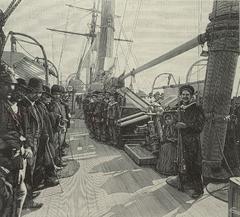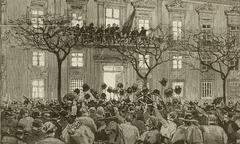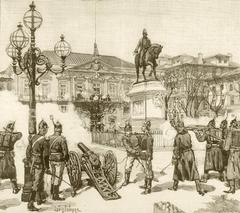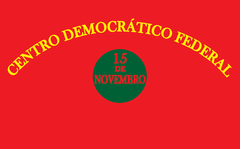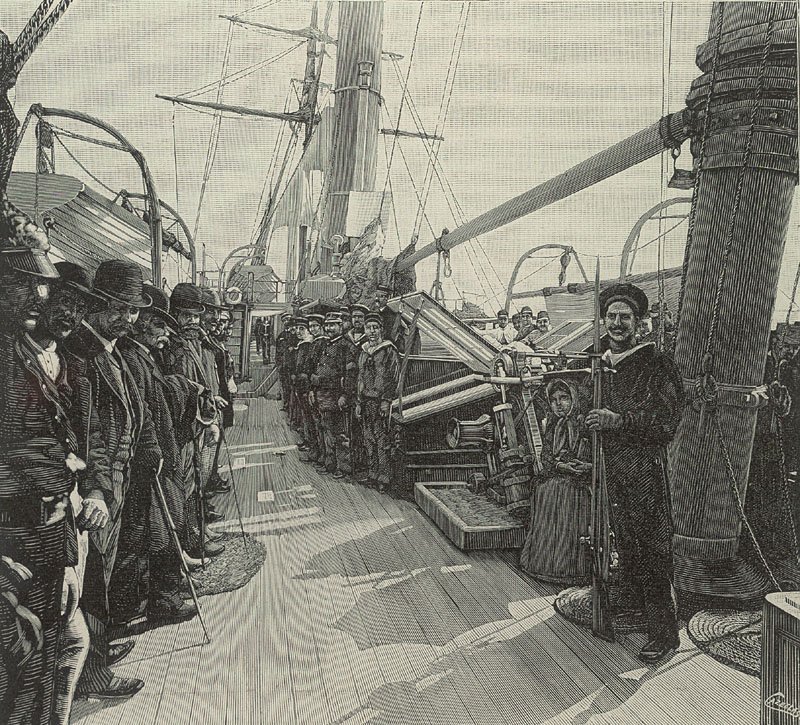
Revolta de 31 de Janeiro de 1891 Porto: Visiting Hours, Tickets, and Historical Sites Guide
Date: 15/06/2025
Introduction
The Revolta de 31 de Janeiro de 1891 marks a defining moment in Portuguese history as the first organized republican uprising against the constitutional monarchy. Taking place in Porto, a city renowned for its liberal traditions, the revolt was spurred by national humiliation following the 1890 British Ultimatum and inspired by republican successes abroad, notably Brazil’s 1889 proclamation of the Republic. Though the revolt was ultimately unsuccessful, it ignited a movement that culminated in the establishment of the Portuguese Republic in 1910.
Today, Porto preserves this legacy through a network of historical sites, monuments, and cultural institutions that allow visitors to retrace the insurgents’ steps and engage with the city’s enduring republican spirit. Key locations like Rua 31 de Janeiro, Praça da Liberdade, and the Museu Militar do Porto serve as tangible reminders of this pivotal event, offering both historical insight and a vibrant urban experience. Whether you are a dedicated history enthusiast or a curious traveler, this guide provides detailed information on the best ways to explore the sites linked to the Revolta de 31 de Janeiro de 1891.
For further historical background and practical guidance, resources such as Introducing Porto - History, Porto-North-Portugal.com, Agenda Cultural Porto, and 31janeiro.org offer additional support. The Audiala app provides interactive guides and multimedia content to enhance your visit.
Contents
- Historical Background
- Main Historical Sites to Visit
- Annual Commemorations and Guided Tours
- Practical Visitor Information
- Accessibility and Travel Tips
- Visual and Interactive Resources
- Frequently Asked Questions (FAQ)
- Sources and Further Reading
Historical Background of the Revolta de 31 de Janeiro de 1891
The Revolta de 31 de Janeiro was born from a climate of political and social unrest. The 1890 British Ultimatum, which forced Portugal to relinquish its African ambitions, was a national humiliation that deeply eroded confidence in the monarchy. Republican sentiment, already strong in Porto due to its liberal traditions, intensified, fueled by the recent success of republican movements abroad. On the morning of January 31, 1891, a group of military personnel and civilians marched through Porto’s streets, declaring the Republic. The revolt was quickly suppressed, but it left a lasting mark, planting the seeds for the 1910 revolution that would finally implement a republican regime.
Main Historical Sites to Visit
Rua 31 de Janeiro
Formerly Rua Nova de Santo António, this street was renamed in 1910 to honor the uprising. It traces the insurgents’ march from the city center, with plaques and monuments commemorating figures like Alves da Veiga and Rodrigues de Freitas. Walking this route provides a direct connection to the events of 1891.
- Visiting Hours: Open 24/7
- Accessibility: Pedestrian-friendly; accessible via public transport (Aliados metro station)
- Tips: Early morning visits offer a quieter atmosphere; look for commemorative markers and historic architecture
Praça da Liberdade (formerly Praça de D. Pedro)
This central square was the scene of the rebels’ seizure of City Hall and the proclamation of the Republic. Surrounded by neoclassical and beaux-arts architecture, it remains one of Porto’s most vibrant public spaces.
- Visiting Hours: Open year-round
- Accessibility: Fully accessible; major transport hub for buses and metro
- Highlights: Statue of King Pedro IV, interpretive panels, excellent for photography
Museu Militar do Porto (Porto Military Museum)
Located near the city center, the museum houses extensive displays on Portugal’s military history, including the Revolta de 31 de Janeiro. Exhibits feature uniforms, weapons, and archival documents that provide deeper context about the military’s role in the uprising.
- Visiting Hours: Tuesday–Sunday, 10:00 AM – 5:00 PM
- Tickets: Adults €5; seniors/students €3; children under 12 free
- Accessibility: Wheelchair-friendly
- Tip: Plan for at least 1–2 hours to explore the exhibits
Praça da República (formerly Campo de Santo Ovídio)
The starting point for the revolt’s march, this square features the Jardim Teófilo Braga and is surrounded by elegant granite buildings. It is a focal point for commemorative events.
- Visiting Hours: Open 24/7
- Accessibility: Wheelchair accessible; reachable by metro (Trindade or Faria Guimarães stations)
- Photographic Spots: Statues and garden features
São Bento Railway Station
Famed for its grand hall adorned with azulejo tiles, São Bento Station is built near the site of a former convent and illustrates Porto’s republican struggles in its artwork.
- Visiting Hours: Open daily; free entry
- Tip: Visit early or late to avoid crowds
Military Barracks of São Bento da Vitória
Originally a staging ground for rebel troops, the barracks now serve cultural purposes. The adjacent monastery often hosts guided tours that reference the uprising.
- Visiting Hours: Generally 10:00 AM – 6:00 PM (check for tour times)
- Tickets: Standard visits are free; special exhibitions may have fees
Monument to the Heroes of the 31st of January
Located near Rua 31 de Janeiro and Praça da Batalha, this monument honors the participants and victims of the revolt. It is a focal point for annual commemorations.
- Visiting Hours: Open at all hours
- Tip: Combine with a visit to the nearby Church of Santo Ildefonso
Biblioteca Pública Municipal do Porto
Directed by Sampaio Bruno during the time of the revolt, the library holds significant archival materials relating to the 31 de Janeiro uprising.
- Visiting Hours: Tuesday–Saturday, 10:00 AM – 6:00 PM
- Tickets: Free entry; special exhibitions may require tickets
- Accessibility: Ramps and accessible restrooms available
- Tip: Register in advance for archival access
Annual Commemorations and Guided Tours
Every January 31st, Porto celebrates the revolt’s anniversary with civic marches, lectures, concerts, and public ceremonies along the original route from Praça da República to City Hall. Several local agencies and cultural institutions organize thematic walking tours, many in English and Portuguese, delving into the historical and cultural context of the revolt.
- Booking: Recommended in advance; see Agenda Cultural Porto for schedules
- Duration: 1.5–2 hours
- Languages: Portuguese and English
- Participation: Open to all; family-friendly
Practical Visitor Information
- Getting There: Porto’s historic center is walkable, with most sites accessible via metro (Aliados, Trindade, or São Bento stations) and bus routes.
- Tickets: Public squares and streets are free to access. Museums and cultural venues may charge an entry fee.
- Dining: Numerous cafés and restaurants can be found near all major sites.
- Shopping: Rua 31 de Janeiro offers local shops, glove-makers, tailors, and gourmet grocers.
- Rest Areas: Benches and gardens available in main squares
- Photography: Permitted in public areas; check museum policies
- Safety: The area is generally safe; exercise normal caution
Accessibility and Travel Tips
- Most public sites and squares are wheelchair accessible. Some historic streets have steep inclines and cobblestones, so sturdy footwear is recommended.
- Best time to visit: Late January for commemorative events, or spring and autumn for mild weather and fewer crowds.
- Tram: A historic tram line on Rua 31 de Janeiro offers a unique travel experience.
Visual and Interactive Resources
Interactive maps, QR-coded plaques, and multimedia content are available along Rua 31 de Janeiro and other key sites. The Audiala app provides audio guides, virtual tours, and up-to-date cultural event information to enrich your visit.
Frequently Asked Questions (FAQ)
Q: What are the visiting hours for the main sites?
A: Public squares and streets are open 24/7. Museums typically open 10:00 AM – 6:00 PM (closed Mondays).
Q: Are there entry fees?
A: Most outdoor sites are free. Museums and special exhibitions may require a small fee.
Q: Are tours available in English?
A: Yes, guided tours are offered in English and Portuguese. Advance booking is recommended.
Q: Is the area accessible for visitors with mobility impairments?
A: Main squares and museums are accessible; some streets may be steep or cobbled.
Q: When do commemorative events take place?
A: Annual civic marches and cultural events occur on January 31.
Conclusion
Exploring the sites of the Revolta de 31 de Janeiro de 1891 offers a window into the heart of Porto’s republican legacy. From the symbolic march along Rua 31 de Janeiro to the commemorative ceremonies at Praça da República, each site tells the story of a pivotal chapter in Portugal’s path to democracy. Whether you attend annual events, join a thematic walking tour, or explore the monuments at your own pace, Porto’s historical landscape invites you to reflect on the courage and ideals that shaped the nation.
For the latest visitor information, tour bookings, and cultural event updates, download the Audiala app and follow local tourism channels. Immerse yourself in Porto’s vibrant history and celebrate the enduring spirit of the Revolta de 31 de Janeiro de 1891.
Sources and Further Reading
- Revolta de 31 de Janeiro de 1891 in Porto: Historical Sites, Visiting Hours, and Visitor Guide, 2024, (Introducing Porto - History)
- Visiting the Revolta de 31 de Janeiro Sites in Porto: Hours, Tickets, and Historical Insights, 2024, (Porto-North-Portugal.com)
- Visiting the Revolta de 31 de Janeiro 1891 Sites in Porto: History, Tours & Visitor Info, 2024, (Agenda Cultural Porto)
- Visiting the 31 de Janeiro Revolt Sites in Porto: History, Tours, and Visitor Information, 2024, (31janeiro.org)
